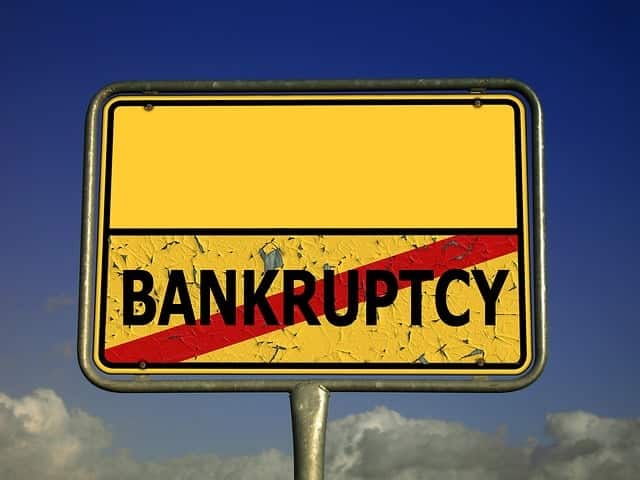Bankruptcy. It’s not a fun topic of conversation, but if personal bankruptcy is something that could be in your future, it’s important to understand what you’re facing. It’s also important to know that there are 2 types of personal bankruptcy.

The first thing to understand is that bankruptcy, as scary as it sounds, won’t leave you penniless. On the contrary – it can actually lessen what you owe. Under the U.S. Constitution, debtors have the ability to relieve all or part of their debts when they can no longer meet those obligations. And most bankruptcy filings initiate an “automatic stay” that immediately protects against creditors that are seeking to collect – meaning no more phone calls or collection notices.
There are multiple types of bankruptcies – and two major types that apply to private consumers: Chapter 7 and Chapter 13. Both types result in a discharge of debt, meaning your obligation to pay certain debts will be erased. The difference between the two is how you get to the discharge: Chapter 7 focuses on the elimination of debt by discharging all or part of the debt, while Chapter 13 focuses on the reorganization of your finances by establishing a payment plan to repay all or part of the debt.
Let’s take a closer look at these types of bankruptcies.
Chapter 7
Chapter 7 will discharge all or some of your debts after your liquid assets are used to repay some of the debt. “Liquid assets” are things you own that can be converted into cash quickly and easily. Your liquid assets are classified into exempt (cannot be used to repay creditors) and non-exempt (must be used to repay creditors). Non-exempt liquid assets must be handed over or distributed among your creditors as partial repayment of your debt.
Exempt property that you should be able to keep are things like your clothes, household furnishings, jewelry (up to a certain value), your car (up to a certain value), tools of your trade (up to a certain value), your pension, welfare or social security payments, and a portion of your home’s equity. Non-exempt items that you might be forced to relinquish include items like your coin collection, valuable family heirlooms, bank accounts and other investments, your second car, and your vacation home.
After all your non-exempt liquid assets have been doled out, any remaining debt is discharged – and you get to keep your exempt assets. Better yet, creditors can’t send third-party collectors to hound you for any remaining debts.
Chapter 13
Under Chapter 13, you repay all or part of your debt through a three- to five-year repayment program. You make a monthly payment to a Chapter 13 trustee for 36 to 60 months. The trustee distributes your payments to the creditors who have filed proper claims.
When you file for Chapter 13, you have to submit a repayment plan to the court. After a review, which can take several weeks, you will be called in for a hearing to approve your payment plan. Keep in mind that your creditors will have the opportunity to object to your plan or your proposed payment amounts at this point, although the judge can overrule them. When your plan has been approved, you’ll need to make all planned payments to the trustee. Once you’ve completed all planned payments, any remaining debt is discharged.
How Do You Qualify?
To qualify for Chapter 7, you must first pass a “means test” to prove that your earnings are less than the median income for your family size in your state. If you can’t pass the means test because you earn “too much,” you will need to opt for Chapter 13 instead. But there’s a debt cap for Chapter 13: You can’t have more than $1,184,200 in secured debt and $394,725 in unsecured debt.
For both types of bankruptcy, you must also sign up for credit counseling from an approved credit counseling agency. And while it’s not required, it’s recommended to seek advice before filing for bankruptcy. Because of the complexity of personal bankruptcy laws, getting professional legal counsel will ensure that your application is filed completely and accurately.
Why Choose Chapter 13 Over Chapter 7?
Some people who are eligible for Chapter 7 elect to file for Chapter 13. Remember that Chapter 7 requires you to relinquish your non-exempt liquid assets, while Chapter 13 allows you to keep these assets. Say you have a car loan, which is a secured debt. If you opt for Chapter 13, you can continue making those payments so you can keep your car.
What Are the Repercussions of Filing for Bankruptcy?
Bankruptcy is a complex issue full of both positive and negative consequences. Sure, you’ve been cleared of your debt, but your credit score will take a big hit. You’ll likely be recognized as a risk to lenders, so (for a while, at least) any loan you can qualify for will carry mega-high interest rates. Also, while bankruptcy erases your past debt, it won’t erase its history. Regardless of which of the 2 types of personal bankruptcy you choose. The bankruptcy will remain on your credit report for many years, and that’s in the public record.
If you’re shouldering a crushing debt load, filing for personal bankruptcy might be an option to help you regain your financial footing and get off to a fresh start. But remember, bankruptcy is not a simple cure-all for out-of-control debt. If you don’t ALSO adjust your relationship with money, you could wind up repeating your past mistakes. If you’d like to talk through these options or investigate strategies to improve your financial track record, contact American Credit Foundation today.